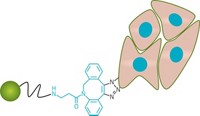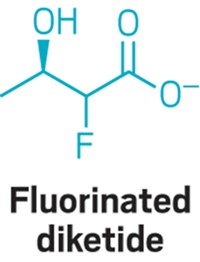Advertisement
Grab your lab coat. Let's get started
Welcome!
Welcome!
Create an account below to get 6 C&EN articles per month, receive newsletters and more - all free.
It seems this is your first time logging in online. Please enter the following information to continue.
As an ACS member you automatically get access to this site. All we need is few more details to create your reading experience.
Not you? Sign in with a different account.
Not you? Sign in with a different account.
ERROR 1
ERROR 1
ERROR 2
ERROR 2
ERROR 2
ERROR 2
ERROR 2
Password and Confirm password must match.
If you have an ACS member number, please enter it here so we can link this account to your membership. (optional)
ERROR 2
ACS values your privacy. By submitting your information, you are gaining access to C&EN and subscribing to our weekly newsletter. We use the information you provide to make your reading experience better, and we will never sell your data to third party members.
Materials
Method grows polymers on cell surface without damaging the cell
Controlled radical polymerization is gentle enough to use with mammalian cells
by Celia Henry Arnaud
February 6, 2017
| A version of this story appeared in
Volume 95, Issue 6
Modifying the surface of cells with synthetic polymers offers a strategy for manipulating cellular behavior. Usually researchers make such modifications by attaching premade polymers to functional groups on the cell surface, but that “grafting-to” approach isn’t very efficient. An alternative approach involves “grafting from,” in which a polymer grows from an initiator on the cell surface. But this has been hard to do in ways that keep the cells—especially mammalian cells—alive. H. Tom Soh of Stanford University; Jia Niu and Craig J. Hawker of the University of California, Santa Barbara; and coworkers report an approach using a light-mediated controlled radical polymerization method that is gentle enough to use with mammalian cells (Nat. Chem. 2017, DOI: 10.1038/nchem.2713). The researchers used cell-surface-anchoring derivatives of 2-(butylthiocarbonothioyl)propionic acid as the chain-transfer agents that are attached to the cells and initiate the reaction. The polymer chain (shown) grows through the addition of cell-compatible polyethylene glycol-based acrylamide monomers. Yeast cells modified this way continued to grow and divide normally. For mammalian cells, which are more delicate, the researchers switched to lipidlike anchor compounds that insert themselves into the cell membrane. They could then modify mammalian cells without harming them. The researchers plan to use the coating to control the cells’ biochemistry and to modulate cell-cell interactions.





Join the conversation
Contact the reporter
Submit a Letter to the Editor for publication
Engage with us on Twitter